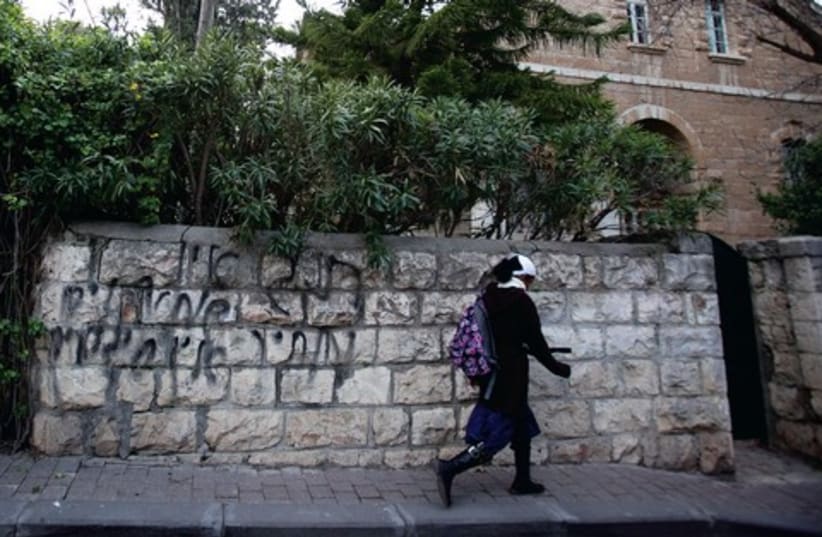Municipal authorities, national law enforcement and the Public Security Ministry are doing an inadequate job combating local violence as well as vandalism costing billions of shekels per year, according to State Comptroller Joseph Shapira’s report released on Wednesday.The report assessed that displays of public disorder, sometimes escalating into dangerous violence and vandalism costing the state in the range of NIS 3b.per year in the years 2010-2012, have grown in recent years, with the responsible authorities failing to keep up.
Focusing especially on the Haifa, Kfar Saba, Netanya and Gan Raveh Regional Council, Shapira said that a national pilot program named “A City Without Violence,” designed to combat the disturbing phenomena, was not being properly implemented.A central aspect of the program is having joint patrols of police and local volunteers to increase the volume of persons overseeing public order and also the scope of ground they can cover and the speed with which they can respond to situations, said the report.But Shapira said that with the initial two-year pilot program concluded in mid-2013, most of the budgeted local volunteers had not been trained and had not joined the police’s efforts, hampering the program’s success.He added that where volunteers had come forward, neither the local authorities managing the volunteers, nor the police, were filing reports on their activities, such that the successes and shortcomings of the program could not be evaluated.The report further criticized the Public Security Ministry for having little to do with the program, including failing to even produce conceptual guidelines for the program until over half of the program’s original pilot time period had elapsed.Briefly, Shapira credited the local authorities with a major expansion in installing video cameras both for deterring crime and to assist in reconstructing crimes and finding criminals after they occur.But then Shapira criticized local authorities for failing to balance security with privacy rights.He said that signs should be installed to put the public on notice in public areas where they will be videotaped and that there should be much clearer mechanisms addressing who can view the footage and under what circumstances, so that privacy rights are protected.Municipalities slammed for local violence, vandalism
New report says displays of public disorder and vandalism are costing the state in the range of NIS 3b.
